Abstract
BACKGROUND: The resistance of bacteria to antibiotics, particularly those used for first-line therapy, is an increasing cause for concern. Unfortunately, in Nigeria, much of the antibiotic therapy is not laboratory individualized or even laboratory extrapolated, leading to empirical prescription. OBJECTIVE: To determine the prevalence of antibiotic resistance among common pathogens in the University of Nigeria Teaching Hospital (Enugu, Nigeria) and to proffer solutions that will help decrease the prevalence. MATERIALS AND METHODS: All clinical isolates, which were isolated by routine methods from routine specimens, sent to the microbiology department had their antibiotic sensitivity performed on sensitivity test agar (Biotec, United Kingdom) using the disc diffusion method in accordance with the National Committee for Clinical Laboratory Standards. RESULTS: Most of the Staphylococcus aureus and coagulase-negative staphylococci were resistant to common anti-staphylococcal drugs. Sixty-four percent of the coliforms were multidrug resistant. A similar pattern was observed for Pseudomonas aeruginosa. With regards to nonurinary isolates of coliforms, higher rates of resistance were noticed to ampicillin, gentamycin, colistin and ciprofloxacin when compared to urinary isolates. CONCLUSION: There is a need for a continuous surveillance program of resistant bacteria to provide the basis for empirical therapy. At the same time, continued adherence to antibiotic policy and procedures in preventing cross-infection is important in the control of antimicrobial resistant bacteria.
Full text
PDF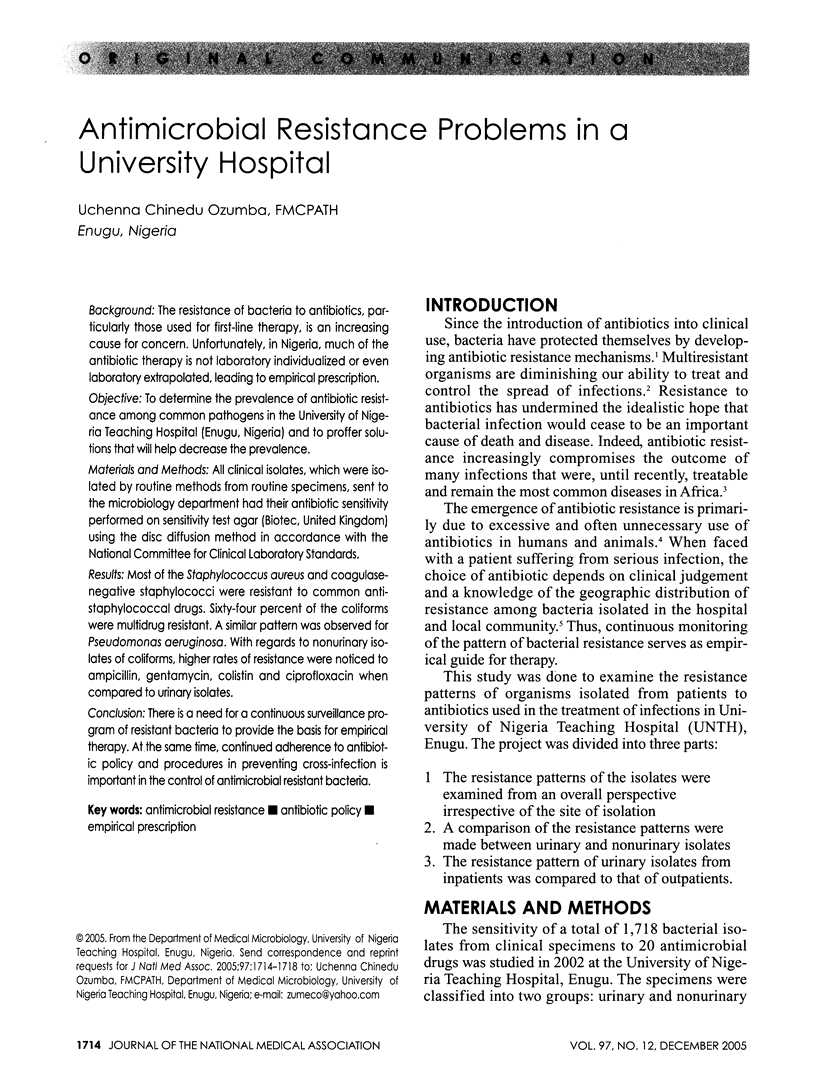
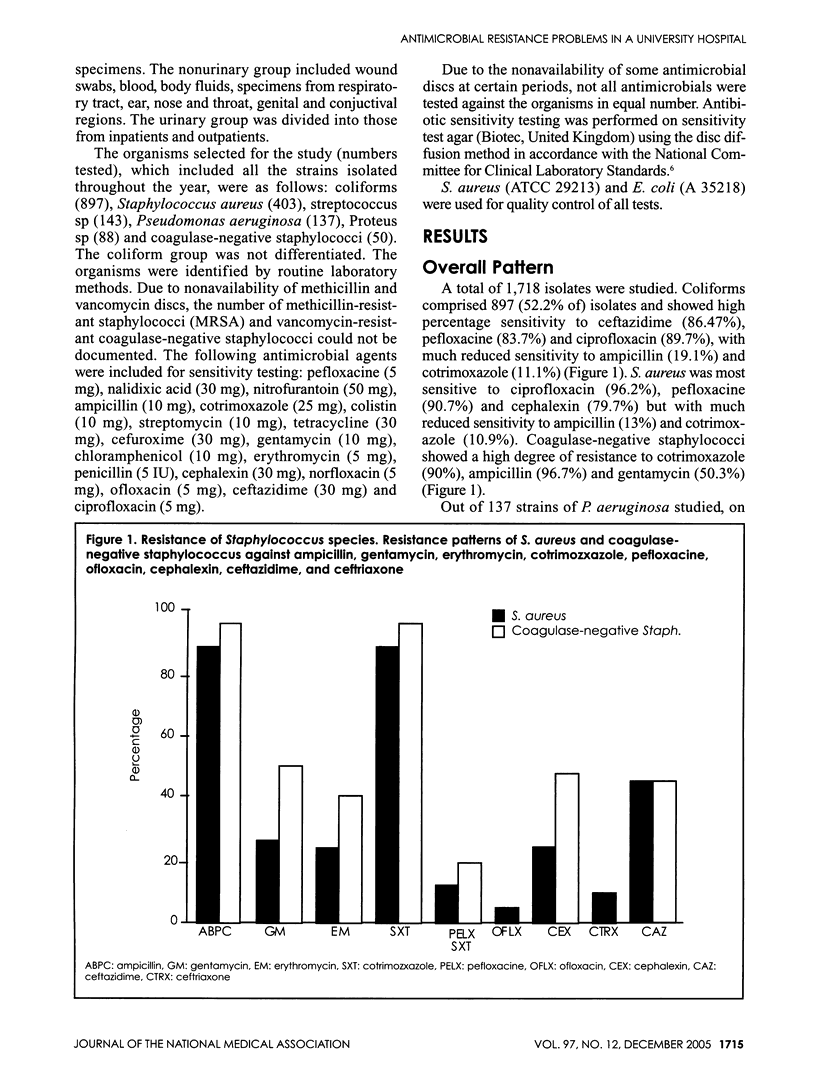
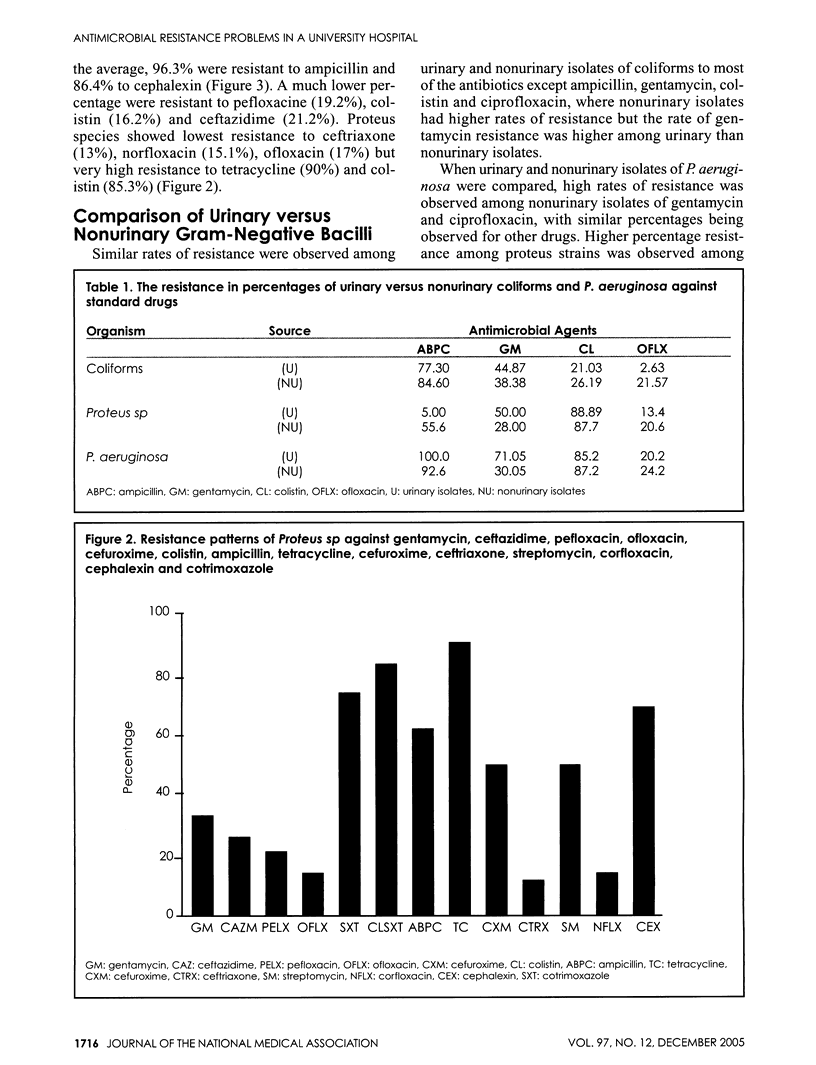
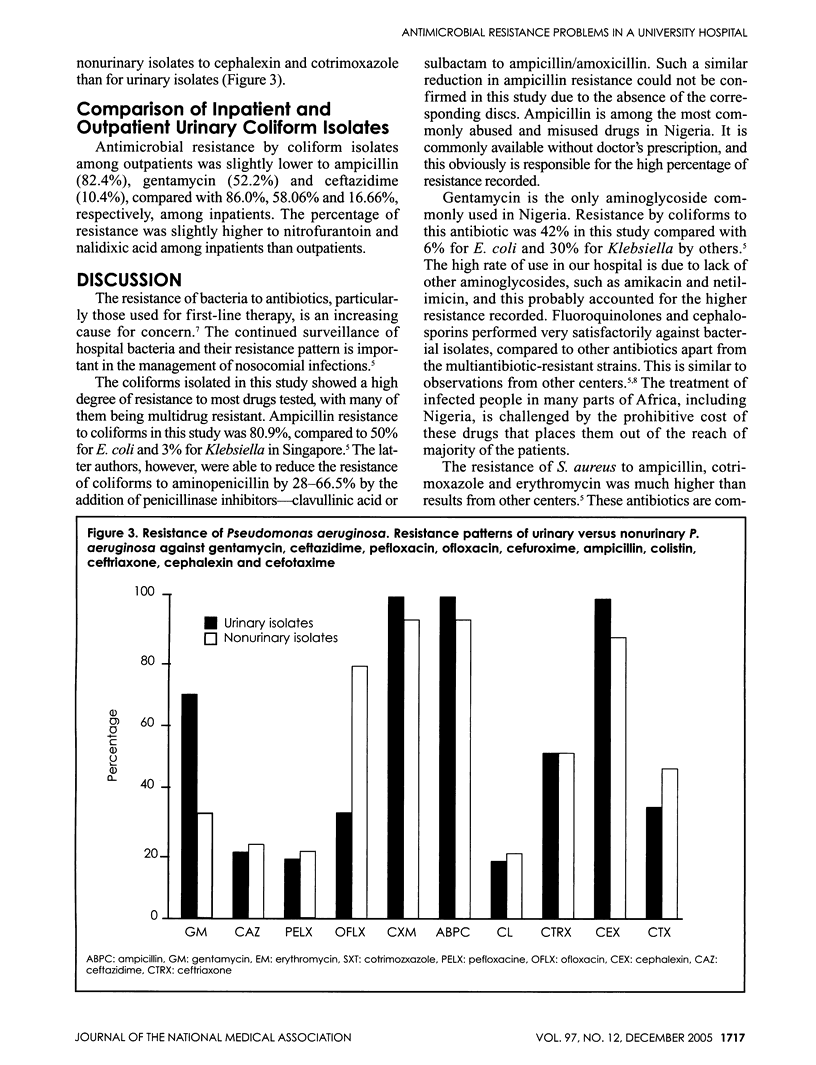
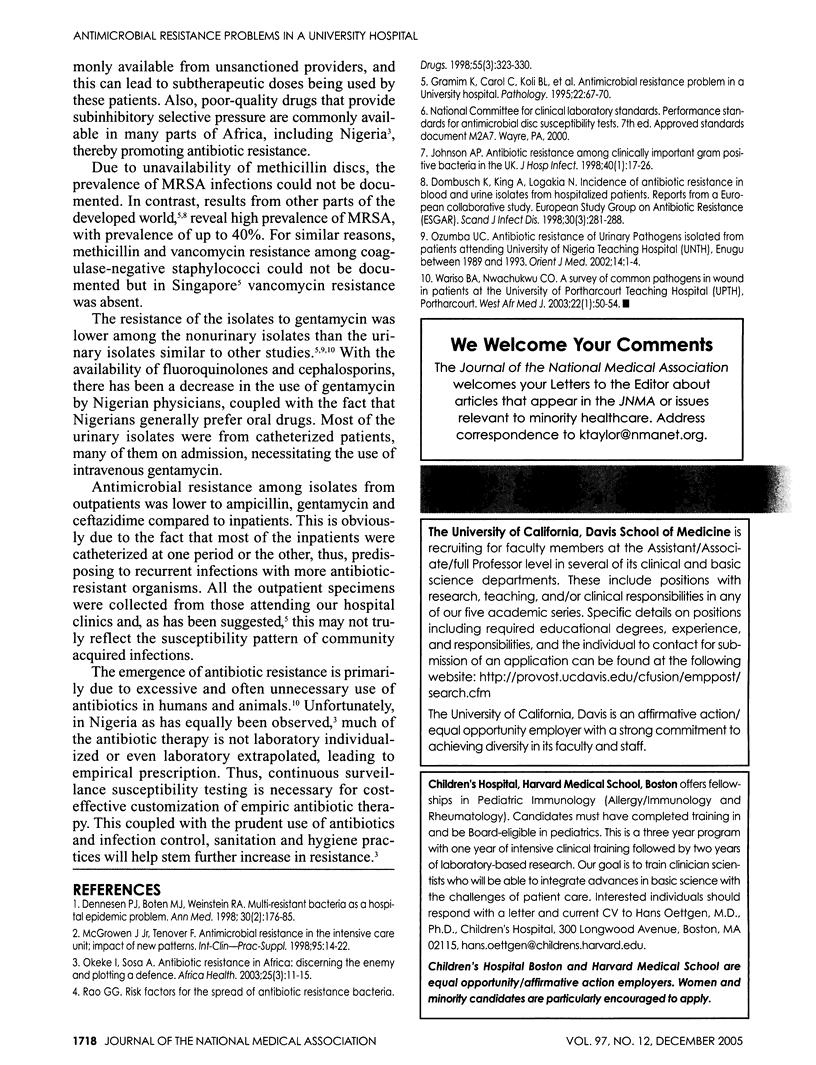
Selected References
These references are in PubMed. This may not be the complete list of references from this article.
- Dennesen P. J., Bonten M. J., Weinstein R. A. Multiresistant bacteria as a hospital epidemic problem. Ann Med. 1998 Apr;30(2):176–185. doi: 10.3109/07853899808999401. [DOI] [PubMed] [Google Scholar]
- Dornbusch K., King A., Legakis N. Incidence of antibiotic resistance in blood and urine isolates from hospitalized patients. Report from a European collaborative study. European Study Group on Antibiotic Resistance (ESGAR). Scand J Infect Dis. 1998;30(3):281–288. doi: 10.1080/00365549850160945. [DOI] [PubMed] [Google Scholar]
- Johnson A. P. Antibiotic resistance among clinically important gram-positive bacteria in the UK. J Hosp Infect. 1998 Sep;40(1):17–26. doi: 10.1016/s0195-6701(98)90020-2. [DOI] [PubMed] [Google Scholar]
- McGowan J., Jr, Tenover F. Antimicrobial resistance in the intensive care unit: impact of new patterns. Int J Clin Pract Suppl. 1998 Jun;95:14–22. [PubMed] [Google Scholar]
- Wariso B. A., Nwachukwu C. O. A survey of common pathogens in wound in patients at the University of Port Harcourt Teaching Hospital (U.P.T.H), Port Harcourt. West Afr J Med. 2003 Jan-Mar;22(1):50–54. doi: 10.4314/wajm.v22i1.27980. [DOI] [PubMed] [Google Scholar]


